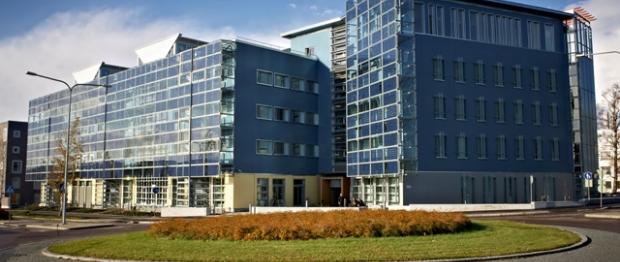A near-zero energy building in Finland, the land of extra-cold winters? It sounds too good to be true, but that is what has been demonstrated by the Environment House (Ympäristötalo) in the eastern Helsinki suburb of Viikki.
The block is the most recent example of how the City of Helsinki takes its progressive trend-setting role seriously and has the best energy performance of an office building in Finland – ever. That is an impressive claim, even though near-zero energy buildings (nZEB) are still something of a rarity.
“There are indeed very few buildings like this and they mainly take the form of pilot projects currently, but nZEBs will be required in the EU from 2021 by the EPBD (Energy Performance of Buildings Directive),” says Jarek Kurnitski, REHVA Fellow at Sitra. “nZEB means very low primary energy use, which is achievable with energy efficiency and renewable energy measures.”
REHVA (Federation of European Heating, Ventilation and Air Conditioning Associations) is dedicated to improving building health, comfort and energy efficiency, so Kurnitski is especially excited about developments at the Environment House.
“These buildings are hi-tech buildings, but the users will not necessarily notice this from their appearance,” he continues. “But they will notice that the energy bill is nearly zero. Typically such buildings also have very good indoor climates, or at least this aspect is not compromised.”
World-leading Nordic technology
The achievements represented by the Environment House aroused a positive response in Milan in spring 2012 when it was presented at the near-zero energy building construction seminar as part of the Expocomfort show. The building drew comparisons with the Elithis Tower in the French city of Dijon, regarded as something of a benchmark in nZEB R&D.
Finland still has some way to go in the field, says Kurnitski, although its Nordic “neighbour” Denmark has taken large strides towards improving energy performance. “Danes are forerunners in the field,” he says. “They have already stated official requirements to be met for 2015.”
The Environment House, in a district of the Finnish capital where other progressive housing solutions have been demonstrated, achieves its low energy consumption by a variety of measures. The southern facing facades, for example, are so-called double facades fitted with PV cells (cells that convert light to electricity) which also provide solar protection. Air conditioning uses water from boreholes, directly circulated via air handling units and “chilled beams”. Heating is based on district heating, a long-established and highly effective and efficient source of warmth in a city where winter temperatures can plummet to minus 20 and below.
Put simply, the double façade on the south side both collects and provides shade from solar energy. Although the window area accounts for only 23% of the surface, the façade projects the impression of a completely glass front. Motorized flaps can be opened by controls in the buildings reception to ventilate the atrium, closing automatically in response to changes in heat and weather.
Other innovative technical solutions include ventilation in meeting rooms controlled by CO2 and temperature sensors. Chilled beams (basically, water pipes concealed in beams close to the ceiling) control air temperature by convection, actively in cellular offices and passively in other rooms.
The end results? Total primary energy use is half of the code requirement and is expected to comply with future nZEB requirements, a very good indoor-climate quality according to the Finnish Classification of Indoor Environment, and a well-controlled construction cost of 2,430 €/m2, roughly standard for office buildings in Finland – and including only 3 or 4 per cent extra energy performance-related costs.
Tim Bird
